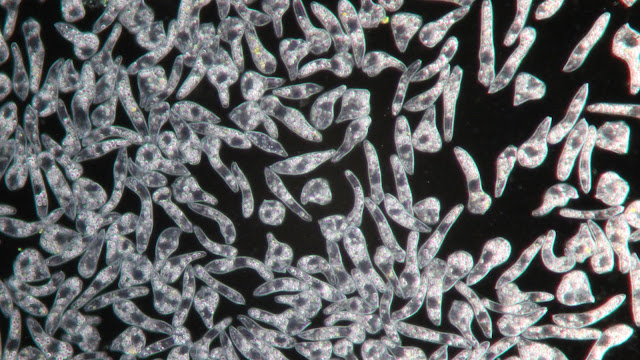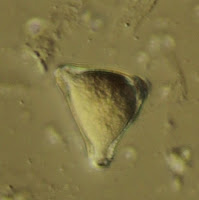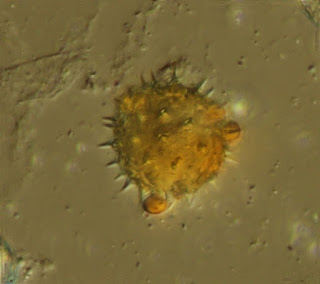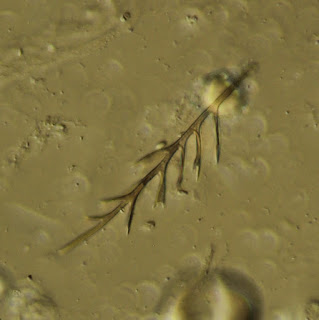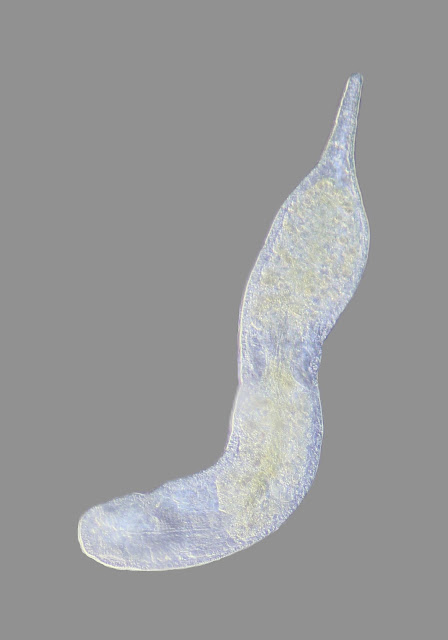Deliberately selecting specimens to view under a microscope has always been a challenge for me...but I'm getting better! I thought I'd share my methodology in the hope that someone else can benefit from my experience. But before I get to the basics of what I do it's important to share that reading about techniques will only get you so far, you have to practice to get better. In my experience, the more you practice, the better you get.
There are two methods I employ, one involves a stereoscope, the other a microscope. My favorite method employs the stereoscope, an LED goose neck lamp and a watch glass. I add 5 to 6 ml of water to my watch glass, apply some side lighting with the LED lamp and start hunting for specimens. My zoom stereoscope can employ powers ranging from 7X to 180X by using various accessory lenses but I generally work in the 14X to 90X range to isolate specimens. First, using a higher power I dial in to a critter that I want to examine with the microscope. possibly clean away debris with a needle, and suck up the specimen using a micro-pipette (20 to 40 ul) with a rubber bulb. This is then transferred to another area of the watch glass and viewed to confirm a successful transfer. If unsuccessful, repeat. When you have the specimen in a water drop, transfer it to a slide, put on a cover slip and start viewing under the microscope.
For those that don't own a stereoscope a similar technique can be employed using your microscope. In this case, a small volume of water, perhaps a couple of ml, is picked up with a dropper or micro-pipette and ejected along the length of a slide. Your specimen is then searched for under a low power, say 4X or 5X, and once found treated just like the critter in the previous paragraph.
Bonus tips: Cover slips float and specimens like to attach themselves to the bottom of them. I use the illustrated tweezers to drop them and pick them up.
And stereoscopes can be as much fun to view protists as microscopes are. 3D and really fun to watch once you become familiar with what you're looking at.







